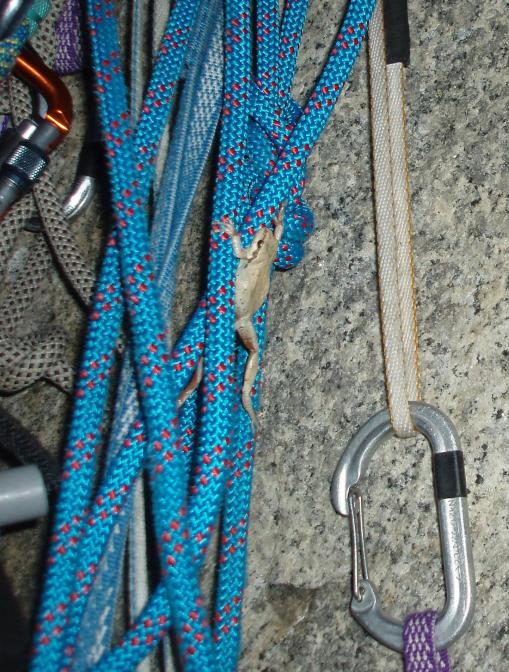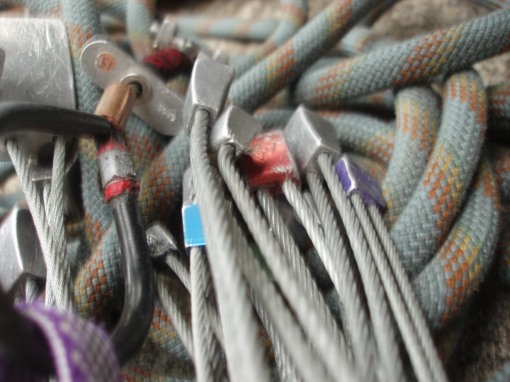Its been little over a year now that Lizzy and I have been using our Reverso3’s, Black Diamond C3’s and Oz carabiners. I wanted to check back in and give some follow up comments to add to my first review .
Petzl Reverso 3
Looking back over the past year I’ve done over 300 pitches of climbing which is likely the reason my latest Reverso is looking pretty shabby. Lizzy’s is still going strong and she loves it. I have enjoyed mine and liked that it worked well with ropes of variable diameters and is very light weight for an auto-blocking belay device.
One important thing that I have learned with the Reverso 3 is that the ease of pulling through the rope, in top belay mode, is proportional to the size of the biner that is being used. After getting my Arc’teryx harness I switched out my belay biners for the Black Diamond VaporLock which I usually use on my daisy chain. I like this keylock biner since it has a pretty narrow nose, good for clipping through bolts, and weights around 50 grams. However this biner does not work well with the Reverso3 when belaying a second on a 10 mm rope and I often had to add second biner. Some interesting stats can be found at Black Diamond on the use of auto-blocking belay devices.

The Reverso3 with a nice large round radius Omega locker. Too bad they are WAY heavy…
So when using the Reverso3 I suggest a nice round carabiner like the Petzl Attache or BD Rocklock. I just got the new Attache 3D which is a bit flatter than the Attache but has a bigger radius than the Vaporlock. I am currently using this biner for belaying since it is lighter than the original Attache and about the same as the Vaporlock.
Overall, I really like the Reverso3 and only have a few minor complaints. The Reverso 3 doesn’t top belay as well with ropes fatter than 10 mm. This doesn’t effect me that much I usually use ropes between 9.4 and 9.8 but it is worth mentioning since I have had trouble with partners’ ropes. Secondly, my Reverso3 only lasted a year before the edges became fairly sharp (like previous models) and I no longer felt comfortable using it for belaying. As I said before this is probably reasonable since I used it for so many pitches, especially for rappelling, which causes the most wear.
Black Diamond OZ Carabiners and Quickdraws.
When I first got a hold of the Oz carabiners they went straight to my rack. It is easy to drop a pound or so off your rack by upgrading to these 28 gram carabiners. So far they have done well and have been taken up many pitches, clipped directly and scraped on sharp granite. I do see the shiny coating leaving some of these biners, but that’s to be expected and I see no scary wear from the last year of use.
After my cams lost some weight, I knew that a new set of ultralight quickdraws were in order. Since getting my first round of Oz carabiners I decided to check out some of the other lightweight biners before committing fully. The Camp Nano 23 was first on my list since it is the lightest carabiner available. A few of my friends use this carabiner and I played with it both on slings and as a racking biner. My main issue with the Nano is the size. My fingers are not that dexterous, so clipping a toy-sized biner in a tricky situation was less than ideal. As a racking biner I found it to be more acceptable but still a bit small for my liking. A good use for the Nano is for a pre-made anchor setup. I’m thinking about buying a few to create this simple setup used by my friends:

Ultra light belay setup. ~120 grams Photo thanks to Nate at PullHarder
This year Metolius added another 23 gram carabiner to the market with the FS (Full Strength) mini. This carabiner is a bit smaller than the Camp Nano but has a nicer looking finish. Since this is even smaller biner than the Camp I think it would be pretty hard to clip in a time critical situation. I think the Camp Nano and the FS Mini have a place in the alpine realm where weight is essential. Also if you have small fingers or hands these might be a good option.
I got to play with another two lightweight biners on our trip to Indian Creek back in March. One of our friends racks his cams on the Mammut Moses, which clock in at 27 grams. This carabiner is almost as large as the Oz but has a funny feeling since it is quite thin. For some reason this biner, as well as the Trango Superfly, 31 grams, just doesn’t feel right in my hand. A combination of a slick coating and the thin metal design makes me stay away from these biners. Many of my friends swear by the Superfly since it is cheap, almost full size and lightweight. I climbed with the Superfly and the Moses a bit more recently and got used to the shape which made me like them a bit more but not as much as the Oz.
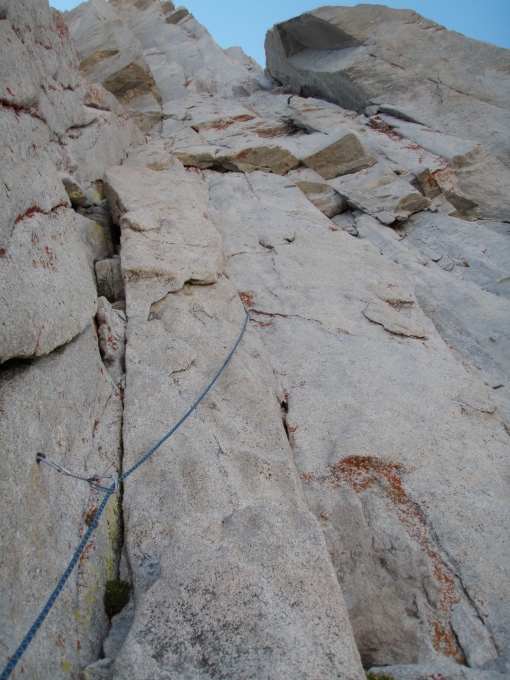
A lonely Oz quick draw on the 3rd pitch of Positive Vibrations
Also in Indian Creek, I picked up two DMM Phantom quickdraws. At 26 grams a biner these QDs are really light and weigh half as much as a Petzl Spirit draw. These got plenty of use and I liked them although they feel a bit small in my hand. I encountered a moment of truth with the Phantom when I just barely made a clip before pumping out at the anchors of Swedin-Ringle. Getting the clip proved these biners were workable and I was ready to get a few more. However, Lizzy dislikes the small size and that, coupled with the $25 per quickdraw price, kept me from buying a full set.
After all this internal debate I bought a bunch of Oz biners on sale and a handful of 20cm BD dyneema dogbones to make long ultralight draws for trad climbing. I think a long quickdraw is faster than an alpine draw and often having 20cm is enough to alleviate rope drag. Unfortunately these draws were stolen at Smith Rock back in June. Luckily I found another sale and picked up a new set of 12 cm Ozs from Bouldering.com. These draws went up the Incredible Hulk three times and I am super happy with them. I recently bought a few more 20cm dogbones which I have used to extend my original DMM 11cm Phantom draws so that I have four long draws to go with my eight shorter OZ draws.
The Oz quickdraws have gotten a lot of use and I am happy to have the variety added by having four longer DMM Phantom draws. I have gotten used to the lightweight feel of the Oz biners and can clip them with ease. Having quickdraws that only weigh around 60 grams each really helps reduce the weight on longer climbs. They also help you have a lighter pack for strenuous Sierra aproaches.
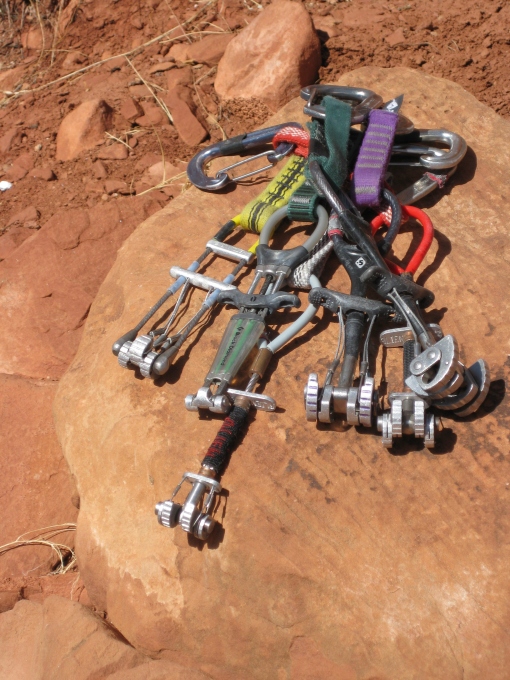
A handful of cams!
Black Diamond C3 Micro Cams
The more I use the Black Diamond C3’s the more I like them. The initial dislike of the stiff springs has changed into a positive attribute. The added force of the springs gives me extra confidence when placing these small cams. As well the narrow head design really allows for the C3’s to be placed where no other cam would fit. As I said before I don’t like the largest size, the #2 yellow, since it seems to be more prone to walking. I’m sure there are situations where the head width would play in but for the most part I prefer the four lobe yellow Alien or the yellow TCU. I used a friend’s Red, #1 C3 on Positive Vibrations and Darkstar and found it to be a good alternative to the green alien even though I don’t own one yet.
Over Memorial day weekend in Zion, Lizzy really came to like the C3’s after taking her longest lead fall, 20 feet or more, on to a marginal green 0 C3. She was super happy that the cam held that real life test made her believe in the cams. One of our friends, Sara, also had a great experience with the purple 00 C3. I think the Green is also my favorite C3 and it got a lot of use on the SW face of Conness, fitting in one spot that was surely too narrow for any of our other small gear. Overall these cams are still working great after a year of use and always come along when thin gear is needed.
Feel free to leave any comments or questions
Luke
See the top tab for other Sweet Gear reviews or click here.



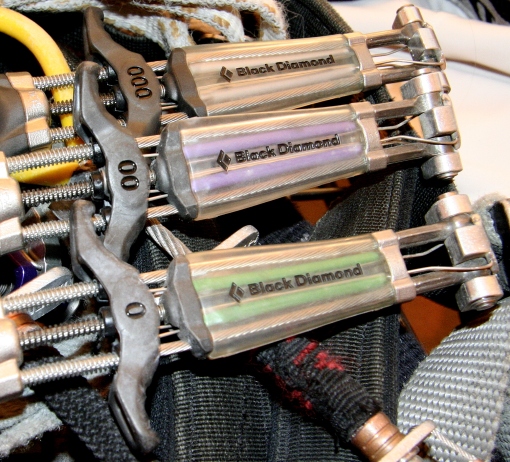


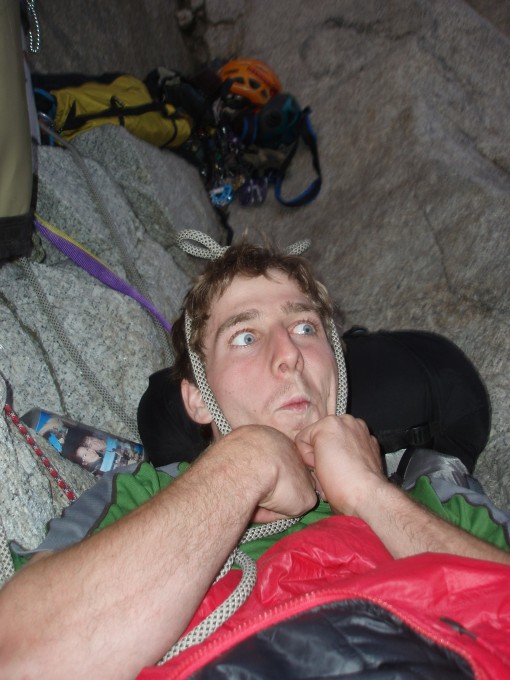
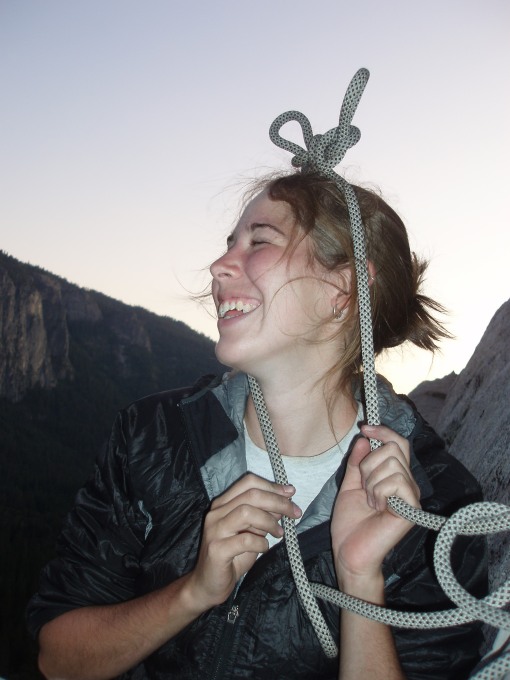

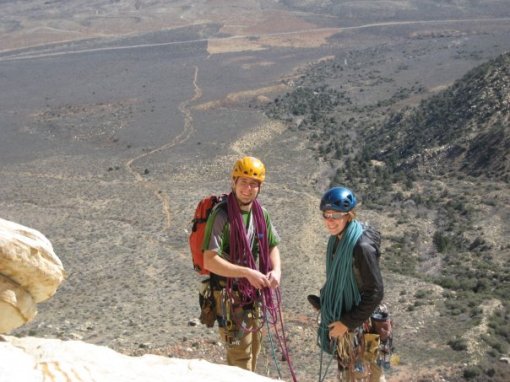 Coiling the doubles on Solar Slab in Red Rocks.
Coiling the doubles on Solar Slab in Red Rocks. Lizzy is ready with the Beal Verdon II after a fun trip up Cathedral Peak.
Lizzy is ready with the Beal Verdon II after a fun trip up Cathedral Peak.
